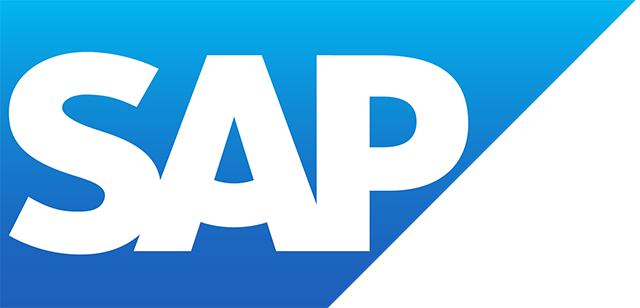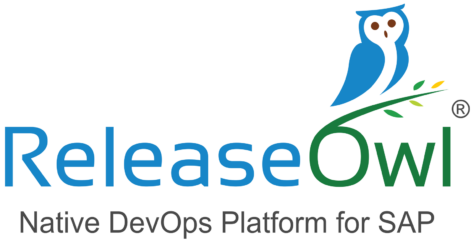SAP Platform Architecture
Filter By
Browse By
- SAP Analytics and AI
- SAP Application Development and Integration
- All SAP Application Development and Integration
- SAP ABAP
- SAP ABAP Development Tools
- SAP ABAP Test Cockpit
- SAP API Management
- SAP BAPI
- SAP Basis
- SAP BRF
- SAP Business Application Studio
- SAP CMS
- SAP Design Studio
- SAP Development Tools
- SAP DevOps
- SAP EAI
- SAP EDI
- SAP Extension Suite
- SAP Fiori
- SAP Fiori Elements
- SAP Integration Suite
- SAP Low Code Application Development
- SAP Low Code Automation
- SAP Netweaver
- SAP Release Management
- SAP UI5
- SAP Web Application Server
- SAP Web IDE
- SAP Business Process Management
- SAP Center of Excellence
- SAP CIO
- SAP Customer Experience
- SAP Data and Data Management
- All SAP Data and Data Management
- SAP BW
- SAP BW/4HANA
- SAP Crystal Reports
- SAP Data Archiving
- SAP Data Center
- SAP Data Governance
- SAP Data Integration
- SAP Data Migration
- SAP Data Quality
- SAP Data Services
- SAP Data Strategy
- SAP Data Visualization
- SAP Data Warehouse Cloud
- SAP DMS
- SAP Document Control
- SAP EIM
- SAP ETL
- SAP ETL Tools
- SAP HANA
- SAP HANA Administration
- SAP HANA Deployment Infrastructure
- SAP HANA Studio
- SAP Master Data
- SAP Master Data Governance
- SAP MDM
- SAP Enterprise Architect
- SAP Enterprise Asset Management
- SAP ERP
- SAP Finance
- All SAP Finance
- SAP Accounting
- SAP AR AP
- SAP Asset Accounting
- SAP Billing Systems
- SAP BPC
- SAP BRIM
- SAP Cash Management
- SAP Central Finance
- SAP Controlling
- SAP COPA
- SAP Cost Center Accounting
- SAP Currency Risk
- SAP e-invoicing
- SAP FICO
- SAP Finance Automation
- SAP Advanced Financial Closing
- SAP Financial Consolidation
- SAP Financial Planning
- SAP FX Risk
- SAP General Ledger
- SAP Global Tax Management
- SAP Hyperion
- SAP Order to Cash
- SAP Payment Processing
- SAP Profitability Analysis
- SAP Rebate Management
- SAP S/4HANA Finance
- SAP SWIFT Compliance
- SAP Treasury Management
- SAP Universal Journal
- SAP Governance Risk and Compliance
- SAP Human Capital Management
- SAP Intelligent Technologies
- SAP Platform and Technology
- All SAP Platform and Technology
- SAP Business Technology Platform
- SAP Cloud
- SAP Cloud Connector
- SAP Cloud Integration Platform
- SAP Cloud Migration
- SAP Cloud Platform
- SAP Cloud Providers
- SAP Cloud Strategy
- SAP Digital Signature
- SAP Container Platform
- SAP HANA Enterprise Cloud
- SAP Digital Asset Management
- SAP Smart Forms
- SAP HEC
- SAP Digital Integration Hub
- SAP Hyperscalers
- SAP Infrastructure
- SAP Messaging
- SAP Quality and Testing
- SAP Security
- SAP Spend Management
- SAP Supply Chain Management
- All SAP Supply Chain Management
- SAP APO
- SAP Asset Management
- SAP Business Network
- SAP Digital Manufacturing Cloud
- SAP Digital Twin
- SAP EWM
- SAP IBP
- SAP Inventory Management
- SAP Label Printing
- SAP Logistics
- SAP Manufacturing
- SAP Manufacturing Automation
- SAP MES
- SAP MII
- SAP MM
- SAP MRO
- SAP MRP
- SAP Order Management
- SAP Plant Maintenance
- SAP PLM
- SAP Production Planning
- SAP S&OP
- SAP SD
- SAP SPM
- SAP Supply Chain Planning
- SAP Track and Trace
- SAP Transportation Management
- SAP System Administration
What is SAP Platform Architecture?
There are two components to any SAP Platform Architecture. The first is the platform, which is a set of solutions and components that provide the functionality that a business needs. The second is the platform architecture, which brings together the business architecture with the technology landscape in a comprehensive design. An example of a platform architecture includes business processes, or a business value chain, that is supported by different parts of the business, which rely on technology platforms or components that provide the functionality needed for those processes. Note that this is different than a data architecture which focuses exclusively on data.
What is SAP Platform Architecture?
There are two components to any SAP Platform Architecture. The first is the platform, which is a set of solutions and components that provide the functionality that a business needs. The second is the platform architecture, which brings together the business architecture with the technology landscape in a comprehensive design. An example of a platform architecture includes business processes, or a business value chain, that is supported by different parts of the business, which rely on technology platforms or components that provide the functionality needed for those processes. Note that this is different than a data architecture which focuses exclusively on data.
The advantage of taking a platform architecture approach is that clearly defines the key services that can then be used for integration with other parts of the business. It also allows business teams to take ownership of the applications and systems that they use and directly manage their technology investments. An SAP Platform Architecture allows organizations, and the various business teams within those organizations, the ability to evolve and adapt existing services while providing new services. Implementing an SAP Platform Architecture involves aligning architecture, technology, integration, and business skills.
SAP Platform Architecture Key Capabilities:
- Integrated design architecture. Without a platform architecture you can end up with a series of data and solution silos, with each part of the business running their own solutions in a way that does not interact. SAP Platform Architecture provides an overarching design at the platform, data, and process levels.
- Global design. Many organizations perform data modeling, or perhaps at a broader level have a data architecture which needs to be global. But SAP Platform Architecture must provide a global interaction between multiple, distributed data structures, data sets, databases, data platforms, and the business systems that utilize them.
- Flexibility through modular design. The layers of an SAP Platform Architecture provide modularization into the platform, where the components and design remain stable, and a complementary set of services and processes that can be updated to support new and changing business needs and requirements.
SAP solutions such as SAP Business Technology Platform, SAP S/4HANA, and SAP HANA Enterprise Cloud all offer reference architectures for their system, but these must be integrated into a broader SAP Platform Architecture that includes not only the technical architecture but also the way that processes interact with data and the business value chain.
887 results
-

Harnessing the Power of Process Mining with the KPMG Intelligent Analytics Platform
The KPMG intelligent analytics platform harnesses the power of business process mining and advanced analytics to analyze and map system transaction flows. Enabling organizations to identify and prevent risks before they occur and detect whether transactions are passing through intended controls, highlighting how to resolve issues in real time.
-

- SAP Infrastructure
 Premium
Premium
Video: Building a Platform for the Future
While most organizations are in the process of updating or transforming their SAP landscape over the next few years, there are a number of challenges that they must address to complete this successfully. One of the biggest of these challenges is the move to SAP S/4HANA, something nearly a quarter of the respondents to recent…
-

- SAP Analytics and AI
 Premium
Premium
Evolving Business Intelligence: Enabling Strategic Imperatives with a Cohesive Data Fabric
Reading time: 2 mins
As organizations seek to evolve or expand upon their ability to enable a cohesive data fabric, business intelligence programs may or may not reflect organizational strategies that should be leveraged to shape these programs. Additionally, many organizations face challenges in executing business intelligence programs that align with strategic imperatives. Corresponding solutions are shifting from on-premise…
-
-

- SAP Finance Automation
 Premium
Premium
How BMO Modernized Their Finance Platform to Derive Business Insights
Reading time: 1 mins
Bank of Montreal sought to find a platform that could help simplify and streamline business processes while also providing more up to date financial information – a must in the banking industry. To help meet these needs, BMO turned to SAP S/4HANA finance to help redirect its focus from generating financial information to deriving insights…
-

- SAP Data Strategy
 Premium
Premium
Enabling a Data Fabric that Links Strategy to Execution
Reading time: 4 mins
Many organizations are slowly beginning to realize the fact that they have a significant gap between their data strategy and execution. Disparate landscapes and varied business user requirements to reactive approaches in addressing specific, high-value needs can make it difficult for organizations to meet their business objectives. In this article, we will explore how SAP…
-

- SAP Asset Management
 Premium
Premium
Achieving Asset Management Excellence through an Integrated Platform
Discover how using an integrated, scalable platform (with standard functions like planning and scheduling to more advanced functions like predictive analytics) can help with change management and user adoption to progress your asset management state from reactive to proactive. Membership Required You must be a member to access this content.View Membership LevelsAlready a member? Log…
-

- SAP Process Integration
 Premium
Premium
Solve Your Toughest SAP Integration Scenarios
Reading time: 7 mins
SAP integration has rapidly risen in the ranks as a chief pain point and challenge for SAP customers worldwide. Our recent SAPinsider executive research report, The CIO’s 2023 Agenda for SAP, SAP S/4HANA, the Cloud, and Beyond, published in April this year, also revealed that integration skills were among the most crucial SAP-related skillsets for…
-
-

- SAP Business Technology Platform
 Premium
Premium
Integrating Ingham’s Complex SAP Landscape with SAP BTP Integration Platform
Inghams, an ANZ-based food manufacturer, embarked on a business transformation journey enabled by RISE with SAP S/4HANA to overcome the challenges of a legacy ERP system and fragmented data sources. Integration played a crucial role in connecting their SAP S/4HANA instance with over 45 bespoke and cloud applications, including SAP MSG, SAP SuccessFactors, and SAP…
-

UST recognized as a Leader in Intelligent Automation Services by Zinnov
Reading time: 2 mins
UST, a digital transformation solutions company, has been recognized as the leading provider of Intelligent Automation (IA) Services by Zinnov, a globally recognized management consulting and strategy advisory firm. Zinnov’s recognition of UST falls under the Mid-tier Service Providers category in their 2023 Zinnov Zones ratings. This rating is a part of Zinnov’s latest Zones…
-

- SAP Data and Data Management
 Premium
Premium
Bringing Data Access and Analysis to all Businesspeople with Phocas Software
Reading time: 6 mins
In the current corporate landscape, aligning data across the enterprise for robust decision-making presents a continuous challenge for many organizations. The vast amount of data that organizations produce is not only difficult to handle, but also even more challenging to analyze due to data complexity or a lack of in-house expertise. Additionally, with businesses drawing…
Become a Member
Unlimited access to thousands of resources for SAP-specific expertise that can only be found here.
Become a Partner
Access exclusive SAP insights, expert marketing strategies, and high-value services including research reports, webinars, and buyers' guides, all designed to boost your campaign ROI by up to 50% within the SAP ecosystem.
Upcoming Events
Related Vendors
Your request has been successfully sent


